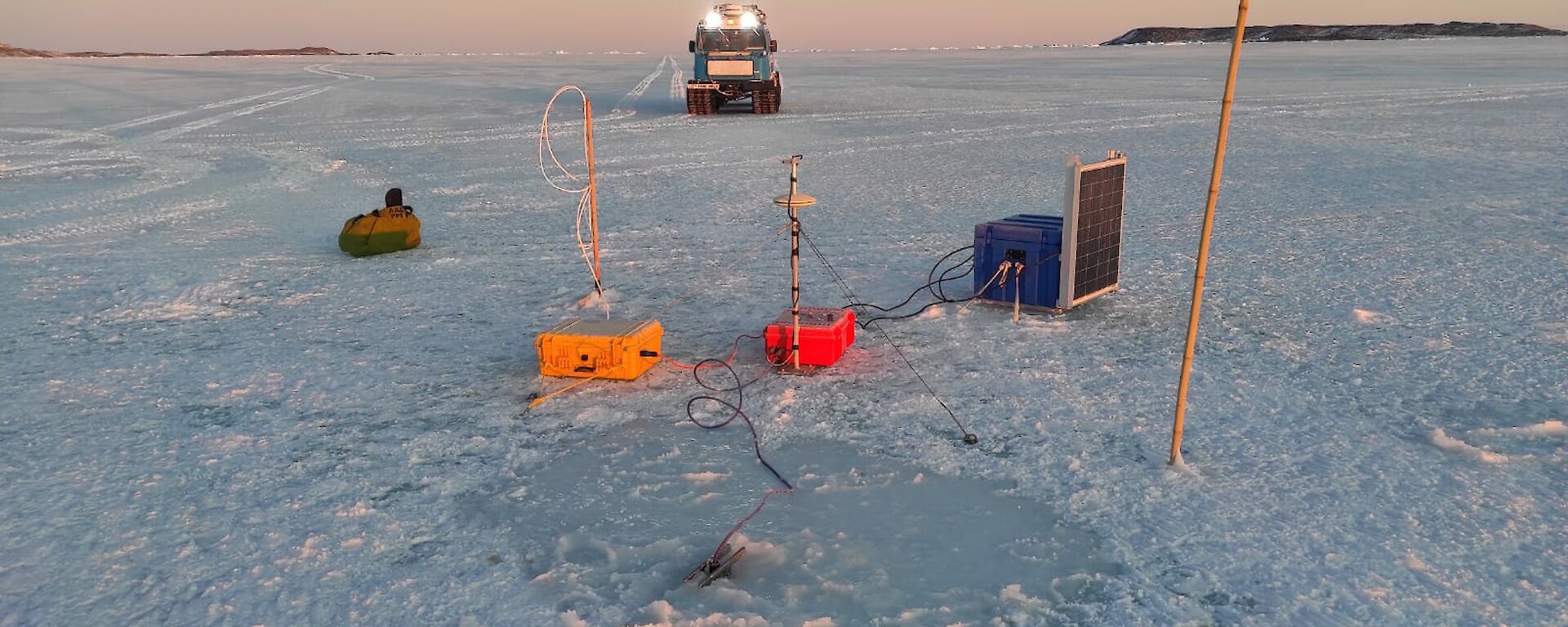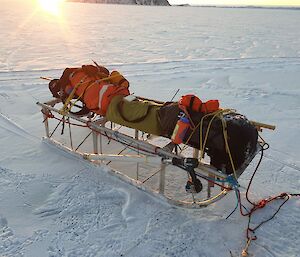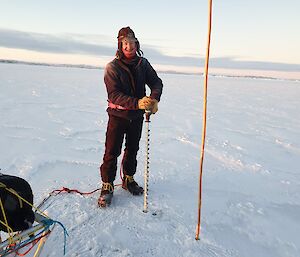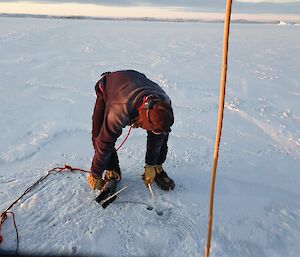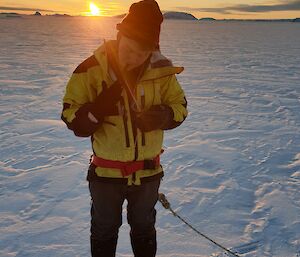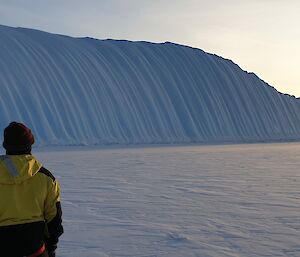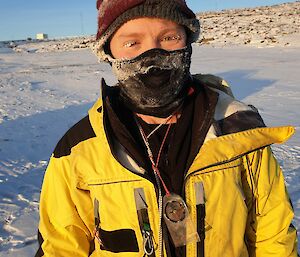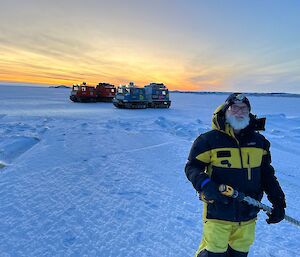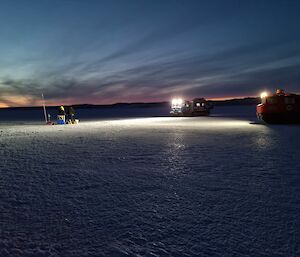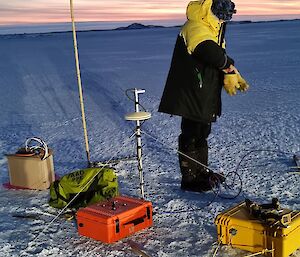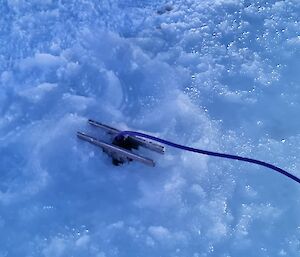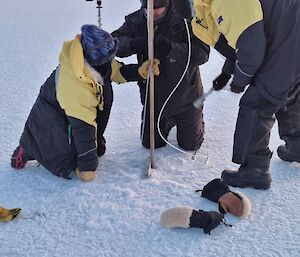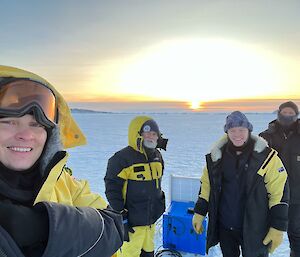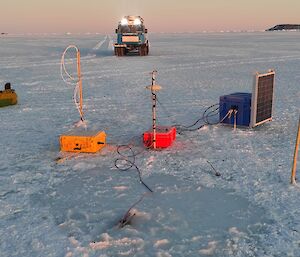Now the weather is colder and we are getting noticeably less sunlight every week, the sea ice has thickened up enough for us to walk and take vehicles on. This has opened up a whole new world for us, including the ability to conduct more science!
Weekly Sea Ice Drilling
Every week we drill seven defined locations within walking distance of station, with the furthest point around 6 km away. We measure the thickness of the sea ice using a tape measure connected to a metal bar, which we lower into the drilled hole. The first few weeks the sea ice was not thick enough for vehicles, so we walked, dragging a sled with our survival gear and measuring equipment on it. We have found that the sea ice has grown much faster than last year; we are about three weeks ahead in terms of how thick the sea ice was at this time 12 months ago.
The photos show a great day out with Bill, using his handmade sled, which moves very gracefully over snow and is beautifully equipped to carry our equipment. We walked around 15 km at −20°C, only stopping to measure the ice and for sightseeing at some nearby icebergs. Luckily when you’re moving and have three or four layers of clothing on, your body doesn’t get too cold; the worst cold you feel is in your hands when taking your gloves off in order to navigate or take a photo. Our top and bottom eyelashes were also starting to freeze together by the time we got back, which is a very bizarre feeling. At −20°C your water bottle freezes within a few hours, so Bill had the idea to put things that needed to be kept warm (drill batteries, drinking water, food), in a bag with a big hot water bottle.
Despite the challenges it is always great to spend the day outside the station and experience what Antarctica has to offer.
Sea Ice Equipment Install
Every year we install three Ice Mass Balance Buoys (IMBs) and two stress gauges on the sea ice near Davis. The IMBs contain strings of temperature sensors that are used to continuously measure the thickness of the ice and snow. A hole is drilled and the string is lowered into the hole and frozen in. The stress gauge measures the forces on it as the ice moves. Another hole is drilled for the stress gauge and we put that down into the ice as well. A big blue box of batteries is used to power both instruments. We screw or tie all the instruments down to stop them blowing away when it gets windy.
The data from these instruments is continuously logged onto an SD card inside the sealed plastic boxes and is used by scientists to study how the fast ice (the ice fastened to the coastline or sea floor) changes over time.
Chris, Josh and Crabby came along for the install and were a massive help in getting everything setup. We left at around 10am when the sun was still struggling to poke above the horizon, so used the light from the Hägglunds vehicles to help set up the camp. The team worked really well together and we managed to install all instruments in one day.
Thank you to all people on station who help with the weekly sea-ice science!
Marshall

